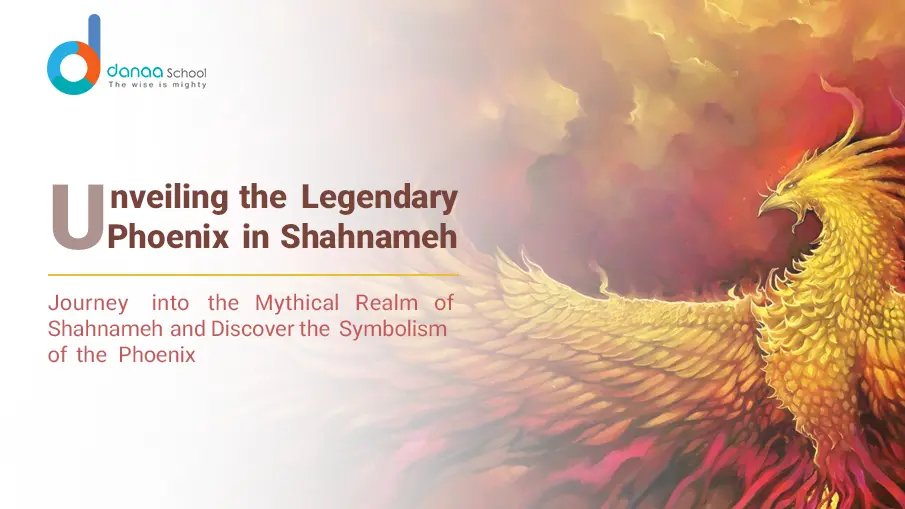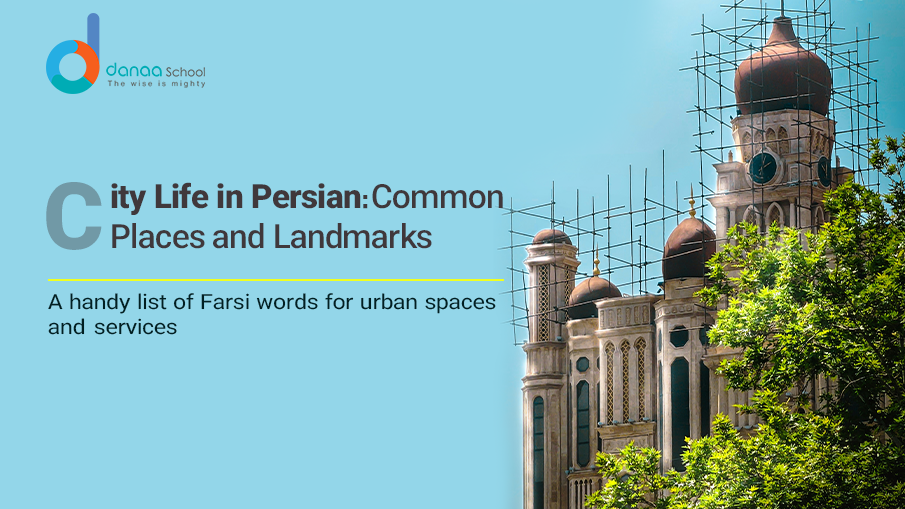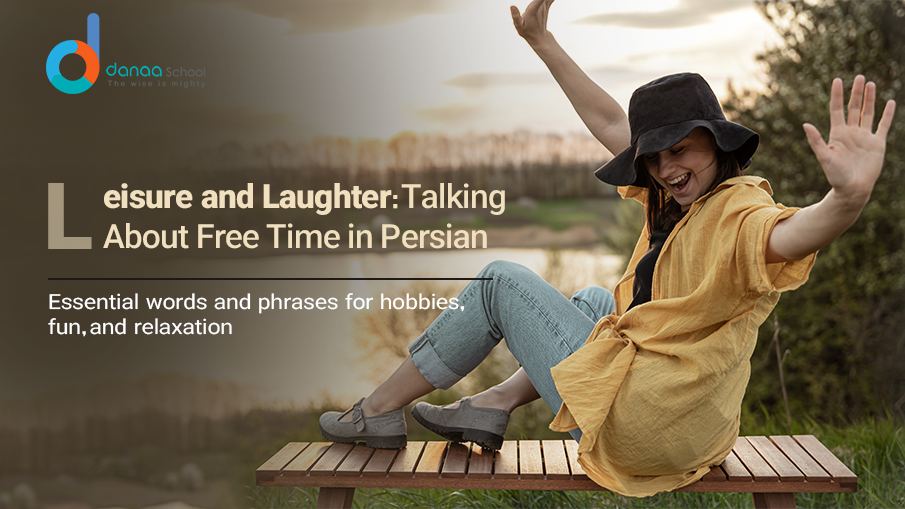Where to Start with Persian Literature
Persian literature, a rich tapestry woven with centuries of history and cultural significance, beckons readers with its enchanting allure. For those starting a journey into this vibrant world of words, understanding Persian literature’s foundations and nuances is essential to fully appreciate its depth and beauty. So, where to start with Persian literature?
Introduction to Persian Literature
Persian literature traces its origins back to the ancient civilizations of Iran, where oral traditions flourished amidst the majestic landscapes of the Persian Empire. Over time, these oral narratives evolved into written forms, encompassing various genres and themes that continue to captivate readers today. From the epic poetry of Ferdowsi to the mystical verses of Rumi, Persian literature reflects the rich tapestry of Persian culture and heritage.
Ancient Persian Literature
Oral Tradition and Early Poetry
The roots of Persian literature can be traced back to the oral tradition of ancient Persia, where poets and storytellers passed down tales of heroism, love, and wisdom through generations. These early poems, composed in Old Persian, celebrated the glory of kings and warriors while also conveying moral lessons and religious teachings.
Influence of Zoroastrianism
The emergence of Zoroastrianism as the dominant religion in ancient Persia profoundly impacted Persian literature, shaping its themes and motifs. The teachings of Zoroaster, emphasizing the dualistic struggle between good and evil, found expression in the poetic works of ancient Persian bards, who often depicted cosmic battles and moral dilemmas in their verses.
Medieval Persian Literature
The medieval period marked a golden age of Persian literature, with the flourishing of poetic forms such as the Ghazal, Qasida, and Masnavi. Influenced by Sufi mysticism and Persian mystic traditions, poets like Rumi and Hafez infused their verses with spiritual insights and timeless wisdom, leaving an indelible mark on the literary landscape. The works of these medieval poets continue to resonate with readers today, offering profound reflections on love, faith, and the human experience.
The Golden Age of Persian Poetry – An Ultimate Guide
Flourishing of Persian Poetry
During the medieval period, Persian poetry reached new heights of artistic expression, with poets exploring a wide range of themes and styles. The ghazal, a poetic form characterized by its lyrical beauty and emotional depth, became a favored genre among Persian poets, who used it to convey themes of love, longing, and spiritual longing.
Sufi Influence on Literature
Sufism, a mystical tradition within Islam, exerted a profound influence on Persian literature during the medieval period. Sufi poets like Rumi and Attar used poetry to express their spiritual experiences and insights, crafting verses that transcended the boundaries of conventional language and thought. Their works, filled with allegory, symbolism, and metaphor, continue to inspire readers with their profound wisdom and spiritual depth.
Key Themes and Genres
Persian literature encompasses a kaleidoscope of themes and genres, reflecting the rich tapestry of Persian culture and history. From the romantic lyricism of ghazals to the epic grandeur of narrative poetry, Persian literature offers something for every reader’s taste and sensibility. Themes of love, nature, and spirituality pervade Persian literature, providing a glimpse into the soul of a civilization that has endured for millennia.
Introduction to Persian Poetry Forms – An Ultimate Guide
Poetry
Ghazal: Love and Longing
The ghazal, a poetic form in Arabic poetry, became a hallmark of Persian literature during the medieval period. Characterized by its lyrical beauty and emotional intensity, the ghazal often explores themes of love, longing, and separation, serving as a vehicle for poets to express their deepest emotions and desires.
Masnavi: Spiritual Journey
The Masnavi, a narrative poem consisting of rhyming couplets, became popular in Persian literature, particularly among Sufi poets like Rumi. Often imbued with spiritual symbolism and allegory, the Masnavi explores the soul’s journey toward enlightenment, offering insights into the nature of reality, love, and the divine.
Prose
Didactic Prose: Fables and Moral Tales
In addition to poetry, Persian literature also includes a rich tradition of prose writing, encompassing genres such as fables, moral tales, and philosophical treatises. Writers like Saadi and Nasir al-Din al-Tusi used prose to impart moral lessons and ethical teachings, weaving together stories and anecdotes to convey timeless truths about human nature and society.
Historical Narratives: Shahnameh
The “Shahnameh,” or “Book of Kings,” stands as one of the crowning achievements of Persian literature, composed by the epic poet Ferdowsi in the 10th century. This monumental work chronicles ancient Persia’s mythical and historical tales, recounting the heroic deeds of legendary kings and warriors in majestic verse. The “Shahnameh” remains a cornerstone of Persian culture and identity, serving as a testament to the enduring power of storytelling.
Epics
Shahnameh: Epic of Persian Kings
The “Shahnameh,” Ferdowsi’s magnum opus, is an epic poem of unparalleled scope and grandeur, spanning thousands of years of Persian history and mythology. Composed in elegant verse, the “Shahnameh” recounts the legendary exploits of kings and heroes, from the mythical beginnings of Persia to the Arab conquests of the 7th century. Its tales of courage, honor, and sacrifice have captivated readers for centuries, embodying the spirit of Persian culture and identity.
Haft Paykar: Seven Beauties
The “Haft Paykar,” or “Seven Beauties,” is another celebrated epic poem in Persian literature, composed by the 12th-century poet Nizami Ganjavi. Inspired by Persian and Indian folklore, the “Haft Paykar” tells the story of Bahram Gur, a legendary Persian king who starts on a series of adventures to win the love of seven princesses. Filled with romance, intrigue, and moral lessons, this epic poem offers a window into the rich cultural tapestry of medieval Persia.
Prominent Persian Literary Figures
Rumi: Mystic Poet
Jalal ad-Din Muhammad Rumi, commonly known as Rumi, is among the most revered figures in Persian literature. A mystic poet and Sufi master, Rumi’s poetry is imbued with love, devotion, and spiritual longing. Influenced by the teachings of Sufism, Rumi’s verses explore the depths of the human soul and the divine union with God, inspiring readers with their profound wisdom and insight.
Legacy of Rumi’s Works
Rumi’s legacy extends far beyond the borders of Persia, with his poetry transcending cultural and linguistic barriers to resonate with readers across the globe. His magnum opus, the “Masnavi,” is considered one of the greatest spiritual classics of all time, offering timeless guidance on enlightenment and inner peace. Rumi continues to inspire millions worldwide through his poetry, uniting them in a shared journey of self-discovery and spiritual awakening.
Discover the Profound Beauty of Rumi Poems in Farsi
Hafez: Master of Ghazals
Themes in Hafez’s Poetry
Khwāja Shams-ud-Dīn Muhammad Hafez-e Shirazi, known simply as Hafez, is celebrated for his mastery of the ghazal form and profound insights into the human condition. His divan, or collected works, is a treasure trove of lyrical poetry that explores the complexities of love, fate, and the temporary nature of existence. Hafez’s verses are imbued with longing and yearning, capturing the essence of human emotion with breathtaking beauty.
Impact of Hafez on Persian Culture
Hafez’s poetry has profoundly impacted Persian culture and society, serving as a source of inspiration and guidance for generations of readers. His divan, with its love and spiritual longing themes, is revered as a timeless masterpiece of Persian literature, cherished by poets, scholars, and ordinary people alike. Hafez’s tomb in Shiraz, Iran, is a pilgrimage site for lovers of poetry, where visitors come to pay homage to the great master and seek solace in his timeless verses.
Ferdowsi: Epic Poet
Composition of Shahnameh
Abu ʾl-Qasim Ferdowsi Tusi, commonly known as Ferdowsi, spent over three decades composing his epic masterpiece, the “Shahnameh,” in the late 10th and early 11th centuries. Written in classical Persian verse, the “Shahnameh” is a monumental work of literature that chronicles ancient Persia’s mythical and historical tales, from the world’s creation to the Arab conquests. Ferdowsi’s dedication to preserving the Persian language and cultural heritage earned him the title of “the Homer of Persia,” his epic poem remains a cornerstone of Persian identity today.
Significance of Ferdowsi’s Epic
The “Shahnameh” holds a special place in Persian culture and history, serving as a testament to the enduring power of storytelling and the resilience of the Persian spirit. Ferdowsi’s epic masterpiece not only preserved the legends and lore of ancient Persia for future generations but also played a crucial role in shaping Persian identity and national consciousness. The “Shahnameh” inspires pride and admiration among Iranians and lovers of Persian literature worldwide through its tales of heroism, loyalty, and sacrifice.
Influence of Persian Literature
The influence of Persian literature extends far beyond the borders of Iran, permeating the cultural fabric of nations across the globe. From the poetic mysticism of Rumi to the epic grandeur of Ferdowsi, Persian literature has inspired writers, artists, and thinkers for centuries, leaving an enduring legacy that continues to resonate with readers today. The themes and motifs of Persian literature have found expression in diverse artistic forms, from music and dance to visual arts and cinema, enriching the cultural heritage of humanity as a whole.
Spread of Persian Literary Tradition
Translation and Adaptation
Persian literary works have been translated into numerous languages, allowing readers from diverse cultural backgrounds to access and appreciate their beauty and wisdom. Translators and scholars have worked tirelessly to capture the essence of Persian poetry and prose, preserving its unique rhythms and imagery for future generations. From the English translations of Rumi’s poetry to the French adaptations of Ferdowsi’s epics, Persian literature finds new audiences and admirers worldwide.
Cultural Exchange and Influence
Persian literature has played a vital role in fostering cultural exchange and understanding between East and West, serving as a bridge between different civilizations and traditions. Through the translation and dissemination of Persian literary works, ideas and values have been exchanged, enriching the global literary landscape and fostering mutual respect and appreciation. Persian literature’s universal themes of love, wisdom, and spirituality have transcended cultural boundaries, inspiring readers of all backgrounds to explore the depths of the human experience.
Impact on World Literature
Influence on European Poetry
Persian literature has profoundly impacted European poetry, particularly during the Romantic era of the 18th and 19th centuries. Poets like Goethe, Shelley, and Byron drew inspiration from Persian poets such as Hafez and Rumi, incorporating Persian themes and motifs into their works. The mystical and exotic allure of Persian literature captivated European readers, who embraced its themes of love, nature, and spiritual longing as a counterpoint to the rationalism of the Enlightenment.
Reception in Western Literary Circles
In recent decades, Persian literature has enjoyed renewed interest and appreciation in Western literary circles, thanks in part to the efforts of translators and scholars to bring its treasures to a wider audience. Universities and cultural institutions around the world now offer courses and programs dedicated to the study of Persian literature, providing students with the opportunity to explore its rich history and cultural significance. Through festivals, conferences, and literary events, the global community of Persian literature enthusiasts continues to grow, fostering a vibrant exchange of ideas and perspectives.
Resources for Exploring Persian Literature
For those eager to delve deeper into the enchanting world of Persian literature, a wealth of resources awaits. From classic texts and anthologies to online platforms and scholarly journals, there are myriad avenues for exploration and discovery, catering to readers of all interests and backgrounds. Books such as “The Conference of the Birds” by Attar and “Divan-e Hafez” provide insights into the mystical traditions of Persian poetry. At the same time, websites like the Persian Literature in Translation Project offer access to English translations of classical Persian texts.
Classic Texts and Anthologies
Divan-e Hafez: Collection of Hafez’s Poems
The “Divan-e Hafez,” or “Collected Works of Hafez,” is a seminal work of Persian literature comprising the complete poetic oeuvre of the renowned poet Hafez. This collection, also known as the “Ghazals of Hafez,” contains hundreds of ghazals, or lyrical poems, that explore themes of love, longing, and spiritual awakening. The “Divan-e Hafez” is revered as a literary masterpiece and a source of inspiration for poets and lovers of Persian literature worldwide.
Shahnameh: Epic of Persian Kings
The “Shahnameh,” Ferdowsi’s epic masterpiece, is essential for anyone interested in Persian literature and culture. This monumental work chronicles the mythical and historical tales of ancient Persia, from the legendary reign of King Jamshid to the Arab conquests of the 7th century. With its vivid storytelling and timeless themes, the “Shahnameh” continues to captivate readers of all ages, offering a window into the rich cultural heritage of Iran.
Online Platforms and Websites
Persian Literature in Translation Project
The Persian Literature in Translation Project is an invaluable resource for readers seeking access to English translations of classical Persian texts. Founded by scholars and translators dedicated to promoting Persian literature, this online platform features a curated selection of translations, annotations, and commentary on works by Persian poets and writers. From medieval epics to modernist poetry, the Persian Literature in Translation Project offers a treasure trove of literary gems for enthusiasts of Persian literature.
Encyclopaedia Iranica
The Encyclopaedia Iranica is a comprehensive reference work covering all aspects of Iranian history, culture, and civilization. Edited by a team of renowned scholars and experts, this online resource offers in-depth articles and essays on topics ranging from ancient Persian literature to contemporary Iranian art. With its extensive bibliography and multimedia content, the Encyclopaedia Iranica is an indispensable tool for researchers, students, and anyone interested in delving deeper into Persian culture and literature.
Learning Persian Language for Better Appreciation
While translations offer access to Persian literary masterpieces, learning the Persian language can enrich one’s understanding and appreciation of its nuances. By immersing oneself in the language, learners can unlock new layers of meaning and connect more intimately with the soul of Persian literature. Language learning resources such as language courses, textbooks, and online tutorials can provide the necessary tools and guidance for mastering Persian language skills, enabling readers to engage with Persian literature in its original form.
Importance of Language in Understanding Literature
Nuances Lost in Translation
Despite the best efforts of translators, nuances, and subtleties can be lost in translation, detracting from the richness and depth of the original text. By learning the Persian language, readers can access the full spectrum of linguistic devices and cultural references employed by Persian poets and writers, gaining a deeper appreciation for their artistry and craftsmanship.
Deepening Cultural Understanding
Language learning is not just about acquiring vocabulary and grammar; it’s also about gaining insights into a literary work’s cultural context and historical background. By studying Persian language and culture, readers can better understand the social, political, and religious forces that shaped Persian literature, enriching their interpretation and analysis of literary texts.
Language Learning Resources
Language Courses and Tutors
Many resources for learning Persian language skills are available, including language courses, tutors, and immersion programs. Universities and language schools worldwide offer courses in Persian language and literature, allowing students to study under experienced instructors and engage with authentic texts. Private tutors and language exchange programs can also provide personalized instruction and support for learners seeking to improve their Persian language proficiency.
Language Exchange Programs
Language exchange programs offer a unique opportunity for language learners to practice their Persian language skills with native speakers and fellow enthusiasts. Through conversation and cultural exchange, participants can improve their language fluency and deepen their understanding of Persian culture and literature. Online platforms and social media groups provide a convenient way to connect with language partners worldwide, making language learning a fun and interactive experience.
Why Choose Danaa School?
Danaa School stands as a beacon of learning and enlightenment, offering a comprehensive curriculum that celebrates the rich legacy of Persian literature. With experienced educators and a vibrant community of learners, Danaa School provides a nurturing environment where students can explore the depths of Persian poetry, prose, and culture. From introductory courses on Persian literature to advanced seminars on specific literary periods and genres, Danaa School offers diverse educational opportunities for students of all levels and backgrounds.
Expert Instructors with Literary Background
At Danaa School, students learn from expert instructors who deeply understand Persian literature and culture. Our faculty members are scholars, writers, and poets passionate about sharing their knowledge and insights with students. With their guidance and mentorship, students gain a deeper appreciation for Persian literature and develop critical thinking skills that will serve them well in their academic and personal pursuits.
Comprehensive Curriculum Tailored to Students’ Needs
The curriculum at Danaa School is designed to cater to students of all levels and interests, from beginners to advanced learners. Our courses cover various topics, including classical poetry, modern fiction, and literary criticism, allowing students to explore the breadth and depth of Persian literature. Whether you’re interested in studying the works of Rumi and Hafez or delving into contemporary Iranian literature, Danaa School has something for everyone.
Testimonials
Student Success Stories and Experiences
“Studying at Danaa School has been a transformative experience for me. The passionate instructors and engaging coursework have deepened my appreciation for Persian literature, opening my eyes to a world of beauty and wisdom. The supportive community and immersive learning environment have truly made my journey into Persian culture unforgettable.” – Amir, Student.
“From the eloquent verses of Rumi to the timeless tales of Ferdowsi, Danaa School has introduced me to the wonders of Persian literature. The supportive community and immersive learning environment have truly made my journey into Persian culture unforgettable. The experienced educators at Danaa School are dedicated to fostering a love of learning Farsi and exploration, providing personalized guidance and support to help students succeed. With diverse courses and resources, Danaa School offers everything you need to start on your journey into the fascinating world of Persian literature.”
FAQs
Is Persian literature only about poetry?
Persian literature encompasses various genres, including poetry, prose, and epics, offering diverse literary works.
How can I learn more about Persian literature?
Exploring anthologies, attending lectures, and engaging with online resources can deepen your understanding of Persian literature.
What makes Persian literature unique?
Persian literature is characterized by its lyrical beauty, profound metaphors, and rich cultural heritage, which set it apart from other literary traditions.
Are there English translations available for Persian literary works?
Many Persian literary masterpieces have been translated into English, allowing readers worldwide to enjoy and appreciate them.
Can I appreciate Persian literature without learning the Persian language?
While translations offer access to Persian literature, learning Persian can provide a deeper understanding of its nuances and cultural context.
What role does religion play in Persian literature?
Religion, particularly Sufism and Zoroastrianism, has significantly influenced Persian literature. Sufi mysticism, emphasizing love and spiritual enlightenment, is reflected in the works of poets like Rumi and Attar. At the same time, Zoroastrian themes of good versus evil are woven into the fabric of ancient Persian epics.
How has Persian literature evolved?
Persian literature has evolved significantly over the centuries, adapting to changing cultural, social, and political contexts. From Ferdowsi’s epic poetry to contemporary writers’ modernist experiments, Persian literature has embraced a diverse range of styles and genres.
Conclusion
So, where to start with Persian literature? Start a journey into Persian literature offers a path of discovery and enlightenment, where timeless works of poetry and prose await exploration. Whether you’re drawn to the mystical verses of Rumi, the lyrical beauty of Hafez, or the epic tales of Ferdowsi, Persian literature promises a wealth of treasures for the curious reader. With resources like Danaa School to guide and inspire you, the journey into Persian literature is as rewarding as it is enriching. Enroll today. Sign up now.










